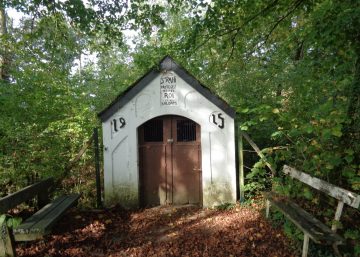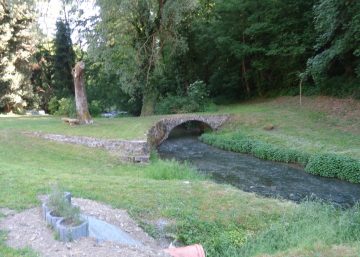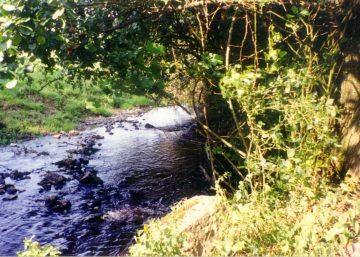Brief description of the walk
This route takes you on a trip back 5,000 years in time, to encounter the famous dolmens and menhirs erected on the Calestienne by Neolithic farmers.
Notes
Bedrock
The village of Wéris is located in geological terms on the Calestienne (a limestone zone which runs to the south of the Fagne-Famenne depression from the Liège region to Chimay). Limestone is a sedimentary rock that reacts with acid (vinegar, for example). This rock was formed under high pressure from sediment made of shells and corals that accumulated at the bottom of the ocean. If it had been subjected to higher temperature and pressure, it would be the metamorphic rock known as marble.
Curiously, all the megaliths stand in this zone, as if it served as a border for a a people whose monuments constituted boundary markers.
The Wéris dolmen
After 1 km, at a crossroads, you will come across the Wéris dolmen, dating from the Late Neolithic (ca. 3000 BC). The word dolmen comes from the Breton dol and men, and means ‘stone table’. A dolmen was a collective grave, but also a place of worship. In front of the dolmen, you can see several tall stone blocks fixed in the ground: these are menhirs, from the Breton words men and hir, meaning ‘long stone’.
The Danthine menhir
After taking the Chemin des Romains through the fields, you come to the N 841 main road linking Erezée with Barvaux. On the left, the Danthine menhir, discovered in 1947, stands by the road. It is not in its original position, but was moved in 1947. A little higher up, you come to the Oppagne dolmen, surrounded by four oaks. This is similar in shape to the other dolmen. This stone, which is so characteristic of the region, was used by the Neolithic peoples to make dolmens and menhirs. They moved the stone blocks by rolling them on logs over a distance of several hundred metres. Wéris puddingstone was also used industrially from 1866 until the First World War. The boulders were cut into large rectangular or semicircular blocks (some of which can still be seen in situ). They were loaded onto special wagons, drawn by ten or fourteen horses, which brought them to Barvaux railway station. From there, the train took them to Liège, where they were used mainly for the construction of floors for blast furnaces and kilns, as puddingstone is highly resistant to heat. Some of the stones were also transported to Lorraine. However, this stone is very hard to work with, which is probably why these monuments have been preserved.. Start: Wéris (Place Arsène Soreil)
Wéris puddingstone
The use of Wéris puddingstone over time
Practical information
Waymarker: yellow cross 1
Distance: 5 km
Approximate duration: 1 hour 40 minutes
Level of difficulty: easy – walk accessible to people with reduced mobility
Distinctive features: open country – mixed woodland and pasture
Si le fichier s’ouvre directement dans le navigateur :
- sur ordinateur, clic droit + Enregistrer la cible du lien sous.
- sur téléphone, appui long + Télécharger le lien



